Remove the radiator cap, wet its seal with engine coolant, and then install it on a pressure tester.
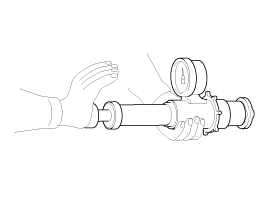
Remove the radiator cap, wet its seal with engine coolant, and then install it on a pressure tester.

Apply a pressure of 93.16 ~ 122.58 kPa (0.95 ~ 1.25 kgf/cm², 13.51 ~ 17.78 psi).
Check for a drop in pressure.
If the pressure drops, replace the cap.
Wait until engine is cool, then carefully remove the radiator cap and fill the radiator with engine coolant, then install it on the pressure tester.
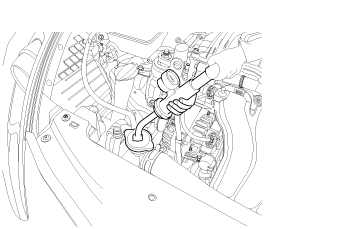
Apply a pressure tester to the radiator and apply a pressure of 93.16 ~ 122.58 kPa (0.95 ~ 1.25 kgf/cm², 13.51 ~ 17.78 psi).
Inspect for engine coolant leaks and a drop in pressure.
Remove the tester and reinstall the radiator cap.
Check for engine oil in the coolant and/or coolant in the engine oil.
Disconnect the battery terminals. (Refer to Engine and transaxle assembly in this group)
Remove the air cleaner assembly. (Refer to Engine and transaxle assembly in this group)
Remove the battery and battery tray. (Refer to Engine and transaxle assembly in this group)
Disconnect the fan motor connector (A)
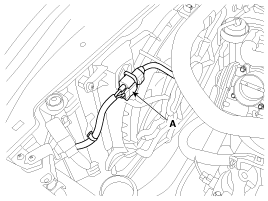
Remove the cooling fan assembly (A).
Tightening torque:
3.9 ~ 5.9N.m (0.4 ~ 0.6kgf.m, 2.9 ~ 4.4lb-ft)
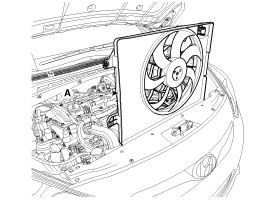
Remove the under cover. (Refer to Engine and transaxle assembly in this group)
Loosen the drain plug, and drain the engine coolant. Remove the radiator cap to help drain the coolant faster.
Disconnect the over flow hose (A) from the filler neck.
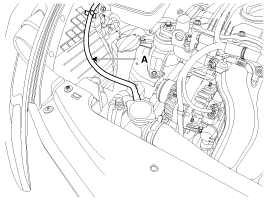
Disconnect the radiator upper hose (A).
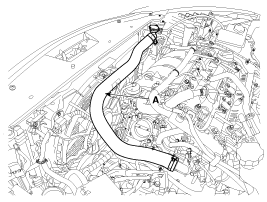
Disconnect the radiator lower hose (A).

When installing radiator hoses, install as shown in illustrations.
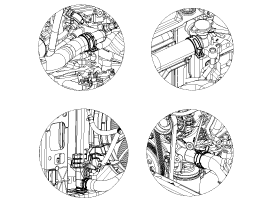
Disconnect the ATF cooler hoses (A/T only). (Refer to AT group - "Automatic transaxle")
Remove the front bumper. (Refer to BD group – “Front bumper”)
Disconnect the hood latch cable. (Refer to BD goup - "Hood")
Remove the radiator support upper member.
Remove the hood switch (A) and the multi-purpuse check connector bracket (B).
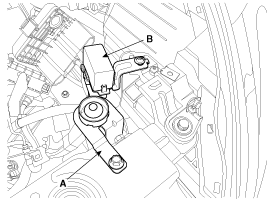
Disconnect the horn connectors (A) and the ambient temperature sensor connector (B).
Remove the radiator support upper member (C).

Separate the condenser from the radiator and then remove the radiator assembly (A).
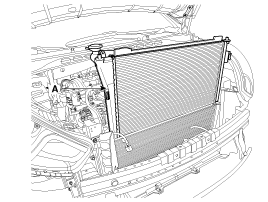
Installation is the reverse order of removal.
Fill the radiator with coolant and check for leaks.
Bleed air from the cooling system.
Start engine and let it run until it warms up (until the radiator fan operates 3 or 4 times).
Turn off engine. Check the coolant level and add coolant if needed. This will allow trapped air to be removed from the cooling system.
Put the radiator cap on tightly, then run engine again and check for leaks.